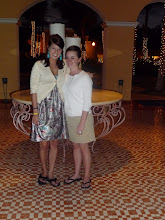
There are two sections to this picture. As you can see, the picture is split horizontally in the center, diving the picture into two different picture. On the top half of the picture, the boy is sending the girl a message. The arrows are pointing toward the girl because she is receiving the message. In the bottom half of the picture, the arrows are pointing toward the boy. While the girl may not necessarily be talking, she is sending some kind of message back to the boy, providing him with feedback. Because of feedback, in the second picture the girl becomes the sender and the boy becomes the receiver. According to Tubbs and Moss, in communication a person can be both a sender and a receiver.
In both pictures, there is a thick, jagged line down the middle (one is pink, the other green). This line represents interference. As the boy sends the message to the girl, there is a good chance she may not receive it because of interference. Interference may include things such as technological issues and semantic confusion. Even though the boy wanted the girl to interpret his message one way, she may interpret it entirely different. Running through the inference line, there is a rectangular block (one is orange, the other blue). This rectangular block represents the channels, which allow a message to be communicated from one place to another. Some forms of channels that could be used in this situation include phone, email, TV, print, and face-face. Behind both the boy and girl there are two colored boxes. These boxes represent the input, or the stimuli from the past and present that give them information about the world.
Communication is represented in this picture through many aspects. Without the sending of a message, there would be no feedback. Without a channel, there would be no message. Without input, there would be no response to the message and there would be no creation of the message. All of these things are essential for this picture. Now, interference was not mentioned as a necessity to make this picture work. In a perfect world, communication would function much more efficiently without interference; however, because communication relies so much on today's technology, there will always be interference of some sort.

No comments:
Post a Comment